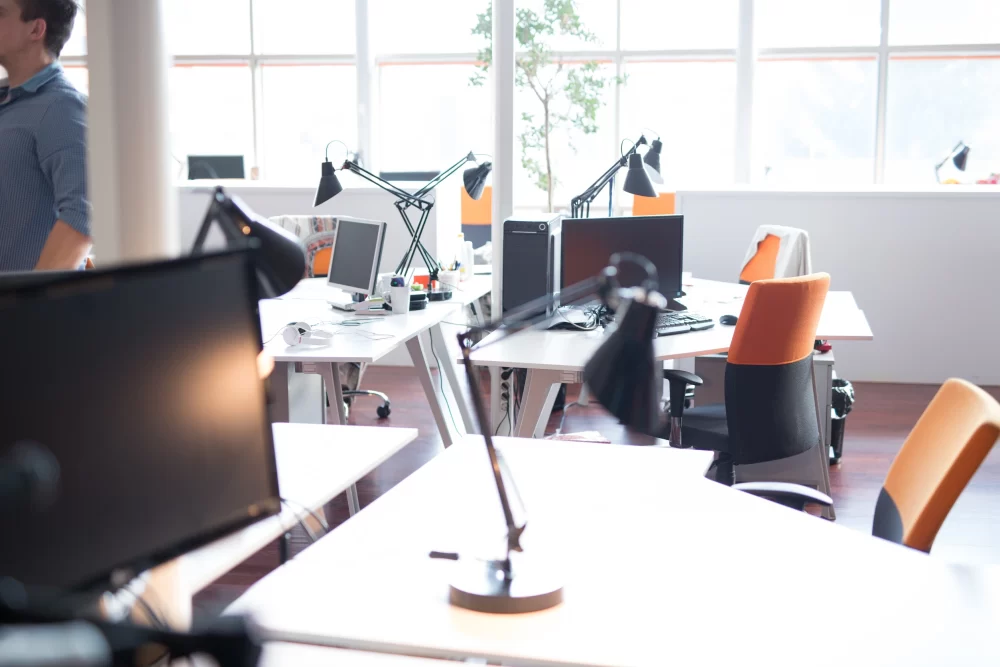
The shift from remote to office-based work is becoming increasingly prominent in today’s corporate world. This trend is driven by a variety of strategic and practical reasons, reflecting the changing dynamics of work culture. Let’s explore 10 compelling reasons why many bosses are eager for a return to the traditional office setting.
1. They Are Paying for the Workspace

Financial Considerations: A significant factor in the push back to the office is the financial investment in physical workspaces. Companies have sunk considerable costs into these spaces, and fully utilizing them is viewed as essential for maximizing investments and avoiding the waste of resources on empty properties.
Maximizing Resources: The desire to get the most out of existing office spaces goes beyond mere cost-saving. It’s about optimizing resources and ensuring that the company’s infrastructure is used effectively. This includes utilizing meeting rooms, tech equipment, and other facilities that are otherwise left idle in a remote work setup.
2. Ability to Oversee Employees’ Work

Enhancing Productivity: Direct supervision in an office setting allows managers to effectively oversee their team’s work habits and productivity. This hands-on approach is often seen as crucial for maintaining high work standards and ensuring that tasks are completed in a timely and efficient manner.
Fostering Accountability: Being in a shared workspace also fosters a sense of accountability among team members. It encourages employees to stay on task and contributes to a more disciplined work environment, which can sometimes be challenging to replicate remotely.
3. Concerns About Full Working Hours

Monitoring Work Hours: Many bosses express concerns that remote workers might not fully commit to their work during standard business hours. In an office, it’s easier to ensure that employees are actively engaged during their scheduled working hours, thus addressing productivity and time management concerns.
Ensuring Availability: In addition to monitoring work hours, being in the office ensures that employees are readily available for impromptu meetings, collaborations, and client interactions. This immediate availability is often crucial for dynamic and fast-paced business environments.
4. Challenges in Training New Employees Offsite

Effective Onboarding: Training new employees is generally more effective in a face-to-face office setting. The physical presence of trainers and mentors is crucial for effective learning and assimilation into the company culture.
Interactive Learning: The interactive nature of in-person training in an office environment helps new hires to better understand the workflow, company policies, and team dynamics. This interaction also allows for immediate feedback and clarification, which enhances the learning process.
5. Reduced Technological Barriers

Minimizing Tech Issues: Remote work’s reliance on technology often introduces challenges, including technical issues and cybersecurity risks. The office provides a controlled environment that minimizes these technological barriers, facilitating smoother workflow and fewer disruptions.
Tech Support and Security: In the office, immediate access to IT support and secure networks reduces downtime caused by tech problems. This ensures that employees can work efficiently without the added stress of troubleshooting tech issues on their own.
6. Can’t Get Past The Traditional 9 to 5 Work Day

Preference for Structure: Many bosses are accustomed to the traditional 9 to 5 workday structure, believing it fosters consistent productivity and team cohesion. This structured approach aligns well with the office environment, as opposed to the more flexible schedules of remote work.
Routine and Discipline: The regularity and discipline of a 9 to 5 routine in an office setting can lead to more predictable and organized work patterns. This routine is often preferred for project planning, meeting schedules, and overall operational efficiency.
7. To Force Attrition Without Severance Pay

Strategic Workforce Reduction: Employing a return-to-office policy as a strategy to encourage voluntary attrition is a tactic used by some employers. This approach can reduce the workforce without the need for severance pay, as employees who prefer remote work may opt to leave voluntarily.
Managing Employee Turnover: This method of attrition is sometimes seen as a way to refresh the workforce and bring in new talent aligned with the company’s current operational mode. It allows for a natural reshuffling of personnel, ideally suited to the demands of an office-based work environment.
8. Maintaining Work-Life Boundaries

Promoting Balance: The blurring of personal and professional life is a common issue in remote work, potentially leading to burnout. A clear physical separation between office and home is seen as crucial for maintaining these boundaries and promoting mental health and work-life balance.
Separation of Spaces: Having a designated workspace helps employees mentally differentiate between their professional and personal lives. This separation is essential for mental well-being, allowing employees to ‘switch off’ from work mode when they leave the office.
9. Young Hires Feel There is a Lack of Community

Building Connections: Younger employees often value the social aspects and networking opportunities provided by an office environment. They perceive remote work as lacking in community and connection, which are vital for their professional and personal growth.
Creating a Sense of Belonging: Bosses recognize that fostering a sense of community and belonging is crucial for employee satisfaction and retention, particularly among younger staff members. The office environment offers a platform for building relationships, mentorship, and a sense of team identity.
10. Fostering Innovation Through Serendipitous Encounters

Encouraging Creativity: The office setting is conducive to spontaneous interactions that often lead to innovative ideas and solutions. These chance encounters are valued for the creativity and unpredictability they bring to the workplace.
Random Inspiration: The informal conversations that occur in office corridors, lunchrooms, or coffee breaks can spark new ideas and collaborations. This environment of unplanned creativity is something that bosses find hard to replicate in a remote setting.
Office-Based Work

The shift towards office-based work is influenced by a combination of financial considerations, strategic workforce management, and the desire to maintain certain workplace cultures and connections. As companies navigate the post-pandemic world, the practicalities and benefits of office work are being re-emphasized.
If you’re considering the best work environment for your team, these insights can help you understand why many corporate leaders are advocating for a return to the office.
Join the conversation and share your views on this evolving work trend.



